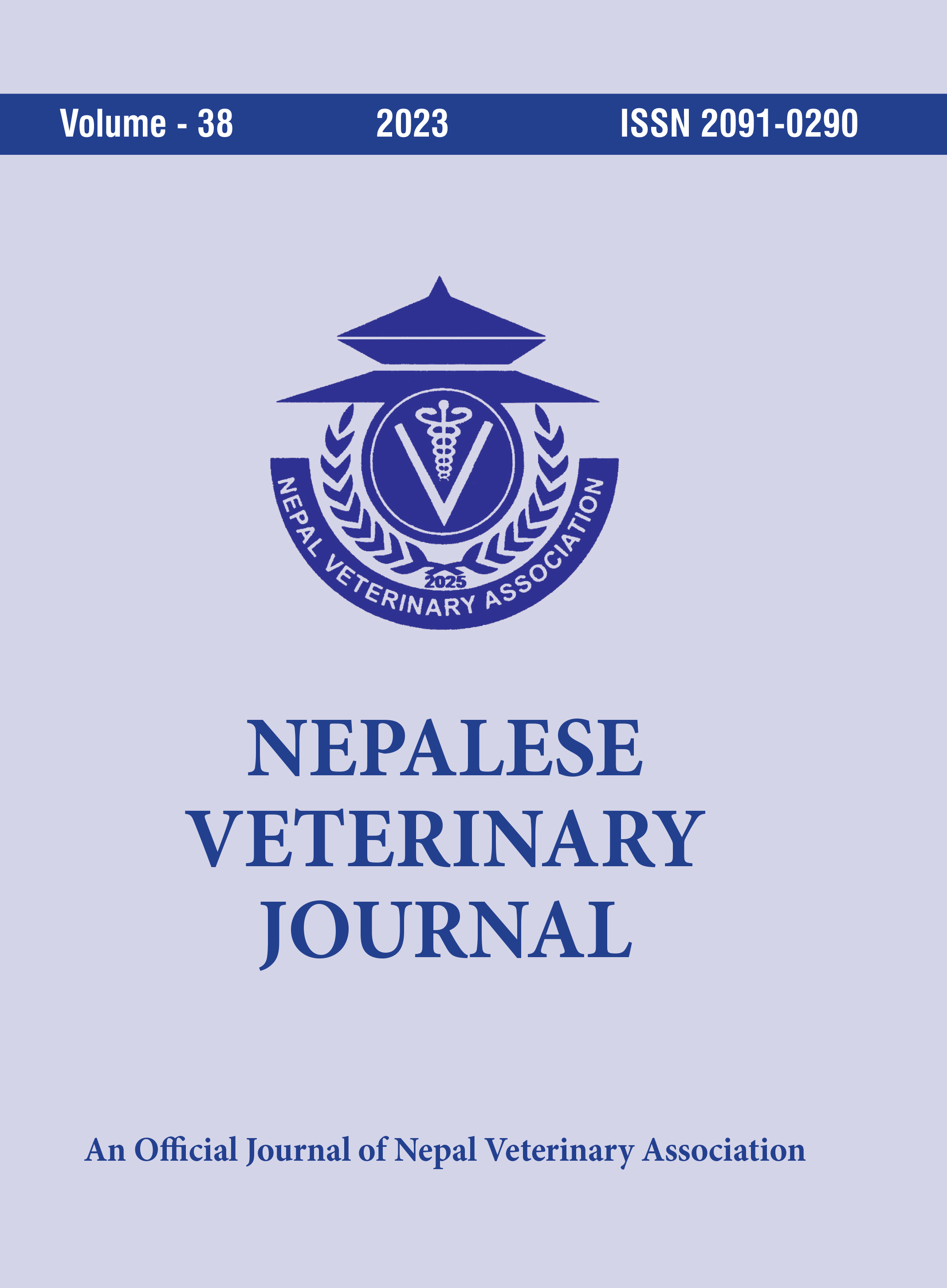A Retrospective Study of Parvovirus Infection in Dogs in Kathmandu
DOI:
https://doi.org/10.3126/nvj.v38i1.55856Keywords:
Clinical, Epidemiology, Dogs, Kathmandu valleyAbstract
Canine parvo virus infection (CPVI) is highly infectious disease of dogs causing acute gastrointestinal illness in dog with high morbidity. In Kathmandu valley, knowledge on the epidemiology of diseases of dogs is limited. To determine the prevalence of disease in owned dogs in the Kathmandu valley and its associated risk factors, a retrospective study of data from clinical records of the Mount Everest kennel club (old Baneshwor height) during a one-year period was conducted. Using an Excel line graph and pie chart, the prevalence of canine parvovirus infection was examined according to season, age, and vaccination status. A total of 504 cases were seen in the 735 clinical records reviewed, of which 145 cases—or 11.01 % of all cases—had CPVI-like symptoms. The prevalence of CPVI in dogs sold by Mount Everest Kennel club in the valley was estimated to be 11.01% where high cases were observed during the dry season (peaks at April and December) though it could also reach peak during the rainy season (July-August). High number (55.6%; 45/81) of outbreaks were noted among the age group below 3 months followed by age group 4 to 7 months (33.3%; 27/81) and least number of outbreaks were noted in the age group older than 7 months (11.1%;9/81). High number (55.6%; 45/81) of outbreaks were noted among the age group below 3 months followed by age group 4 to 7 months (33.3%; 27/81) and least number of outbreaks were noted in the age group older than 7 months (11.1%;9/81). Disease incidence was highest in German shepherd (21%; 17/81), Japanese spitz (18.51%; 15/81), Labrador (18.51%; 15/81) and mixed/cross (42%; 34/81). Few Vaccinated dogs (7.4%; 6/81) were also found to be tested positive with CPVI. Our finding showed that temperature, breed susceptibility and vaccination status can be the possible risk factors associated with CPVI infection among dog population in Kathmandu valley suggesting pet owners to regularly follow the vaccination schedule, vaccinate their dogs in a timely manner, and routinely check on the health of their canines. Additionally, owners should be aware of the risks and should keep their dogs away from stray dogs.
Downloads
Downloads
Published
How to Cite
Issue
Section
License
© Nepal Veterinary Association




